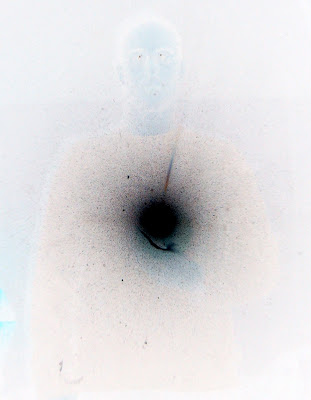Having just moved to Burlington, Vermont, there are a number of things that have struck me as new, intriguing, and exciting. The beautiful geography is an obvious example, a lively and vibrant community is another, and then there's a certain put-your-money-where-your-mouth-is attitude toward social responsibilities that is both refreshing and challenging at the same time.
One of the consequences of said attitude is a strong emphasis on locally grown food, an idea which I had romanticized about while living in suburban New Jersey that is a surprising reality in a part of the world where the growing season is only five months long. True, food might cost a bit more than it does at Walmart or the local chain grocery store, but the satisfaction of actually going and buying your produce from the farmer who grows it is not without value.
Some of the local gems I've sampled so far are a few breads from various local bakeries, feta cheese from a goat farm, pesto, home-brewed root beer, fresh jam, clover honey, humus, an organic, free range chicken, a hodgepodge of various produce, and of course the ubiquitous maple syrup. Hands down, however, my favorite treat has been the pints of multi-colored cherry tomatoes available at any one of the dozen or so farm stands at the market.
Prior to my first trip to the Burlington Farmer's Market, I hadn't realized that tomatoes came in colors other than red. I was accustomed to the standard variety, flavorless red tomato--the kind that caps a burger at McDonald's. As a cook, of course I knew of cherry tomatoes, grape tomatoes, and have had the privilege of enjoying a backyard heirloom tomato now and again but aside from that rare seasonal treat, my experience of tomatoes was largely negative. At best, they could be seasoned, cooked down, and dressed up into a nice Italian gravy, but to eat the chalky, bland, fleshy fruit on its own was something which held little appeal to me. That is, until I had my first yellow cherry tomato...
The shocking complexity and breadth of flavor that greeted me as the skin of the tomato burst between my teeth almost stunned me. That something I had regarded as bland was as dynamic and full of flavor as this little tomato was a revelation. Upon experiencing the purple, green, orange, and red varieties, I was further floored. Not only did they come in different colors, but there were different flavors too!
One night while talking to my roommate about home-brewed beer, he admitted that while he may have never brewed an award winning beer, his own adventures in brewing caused him to experience beer in an entirely different way than he had before. Now, when he drank a beer, he noticed a quality which had gone unnoticed before--freshness. As he was explaining this to me, he mimed drinking a beer, and then smiled and said, "Somebody made this. When you taste a good beer, you can tell that there was a person behind it who cared about the flavors, the ingredients, and the freshness. When you taste a normal beer, it's missing that."
That, I realized, is what is so amazing about the tomatoes here. Sure, having variety and freshness is essential, but what distinguishes these tomatoes from the ones on a McDonald's burger isn't the difference in color, texture, or size. It's that I can actually taste that somebody grew, cared for, and harvested this tomato, and it just so happens to be the same guy that's thanking me as I hand him a few dollars for the food that's going to sustain me for the week.




